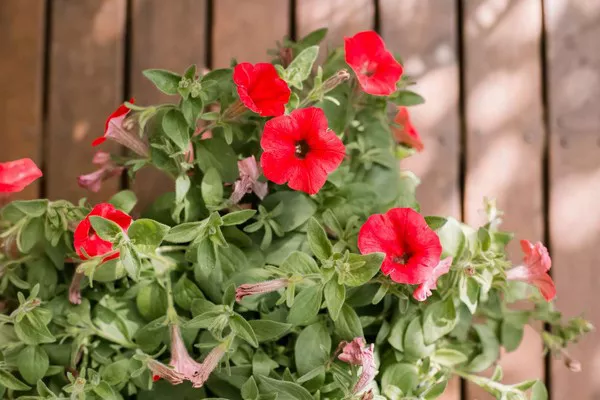Magnolias, with their iconic large, glossy leaves and fragrant blossoms, are cherished additions to gardens and landscapes. However, these beautiful trees can fall victim to various pests that feed on their leaves, compromising their health and aesthetics. In this comprehensive guide, we delve into the common pests that target magnolia leaves, their potential impact, and effective strategies for managing infestations.
The Culprits: Pests that Prey on Magnolia Leaves
Magnolia trees are susceptible to a range of pests that can cause significant damage to their leaves. Some of the most common culprits include:
1. Magnolia Scale (Neolecanium cornuparvum)
Magnolia scale insects are often found on the undersides of leaves and along branches. They appear as small, raised bumps that can range in color from white to brown. Heavy infestations can lead to leaf yellowing, premature leaf drop, and overall tree decline.
2. Whiteflies (Family Aleyrodidae)
Whiteflies are tiny, winged insects that cluster on the undersides of magnolia leaves. They feed on plant sap, causing leaves to turn yellow, become distorted, and ultimately drop prematurely.
3. Aphids (Family Aphididae)
Aphids are soft-bodied insects that congregate on new growth and leaf undersides. They pierce the plant tissue and feed on sap, often leading to curling, yellowing, and stunted growth of leaves.
4. Tuliptree Aphid (Illinoia liriodendri)
Also known as magnolia aphids, these insects target magnolia leaves, causing them to curl and distort. Large populations can lead to significant leaf damage and even the growth of sooty mold on the honeydew they excrete.
5. Caterpillars (Various Species)
Certain caterpillar species, such as magnolia green caterpillars and Eastern tent caterpillars, can defoliate magnolia trees by consuming leaves. Their feeding activity can result in unsightly bare branches and reduced photosynthesis.
Assessing the Impact of Pest Infestations
Pest infestations can have detrimental effects on magnolia trees, affecting their appearance and overall health. Here are some key consequences of pest feeding on magnolia leaves:
1. Leaf Damage: Pests can cause physical damage to leaves, leading to discoloration, curling, and distortion. Severely damaged leaves may drop prematurely.
2. Reduced Photosynthesis: Leaf damage impedes the tree’s ability to carry out photosynthesis, affecting its energy production and overall growth.
3. Weakness and Stress: Pests weaken magnolia trees by consuming essential nutrients and causing stress. Weakened trees become more susceptible to other diseases and environmental stressors.
4. Decline in Aesthetics: Aesthetic appeal is a hallmark of magnolias. Infestations can compromise the tree’s visual allure, reducing the overall value of the landscape.
Effective Strategies for Pest Management
Managing pest infestations on magnolia leaves requires a combination of proactive measures and appropriate interventions. Here’s how to effectively address these challenges:
1. Cultural Practices
Maintain Tree Health: A healthy tree is more resilient to pest attacks. Ensure proper watering, fertilization, and mulching to promote tree vigor.
Pruning: Regularly prune and remove dead or diseased branches to enhance air circulation and minimize hiding places for pests.
Sanitation: Remove fallen leaves and debris from the base of the tree, as they can provide breeding grounds for pests.
2. Natural Predators
Encourage Beneficial Insects: Some insects, such as ladybugs and lacewings, feed on pests like aphids and whiteflies. Planting nectar-rich flowers can attract these beneficial insects to your garden.
3. Horticultural Oils and Soaps
Use Horticultural Oils: These oils suffocate and smother pests by coating their bodies. Apply during the dormant season to target overwintering pests.
Soap Solutions: Insecticidal soaps disrupt pests’ cell membranes and can be effective against soft-bodied insects like aphids and whiteflies.
4. Insecticides
Targeted Treatments: If infestations are severe, targeted insecticides can be used. Choose pesticides labeled for use on magnolias and follow application instructions carefully.
Neem Oil: Neem oil is a natural insecticide derived from neem trees. It interferes with pests’ feeding and growth.
5. Integrated Pest Management (IPM)
Monitor: Regularly inspect your magnolia tree for signs of pest activity. Early detection allows for timely intervention.
Selective Treatment: Employ a combination of strategies tailored to the specific pests and their life cycles.
Preventive Measures: Implement practices that prevent pests from establishing in the first place, such as introducing beneficial insects or applying dormant oils.
Conclusion
The beauty of magnolia trees can be marred by pests that feed on their leaves, causing damage and compromising their health. Understanding the common pests that target magnolia leaves, recognizing the signs of infestation, and adopting proactive management strategies are essential for maintaining the vitality and aesthetics of these beloved trees. By combining cultural practices, natural predators, horticultural oils, and judicious use of insecticides, you can effectively protect your magnolia trees from the ravages of leaf-feeding pests. A well-executed Integrated Pest Management (IPM) approach not only safeguards the health of your magnolia but also preserves the enduring charm they bring to your outdoor spaces.


